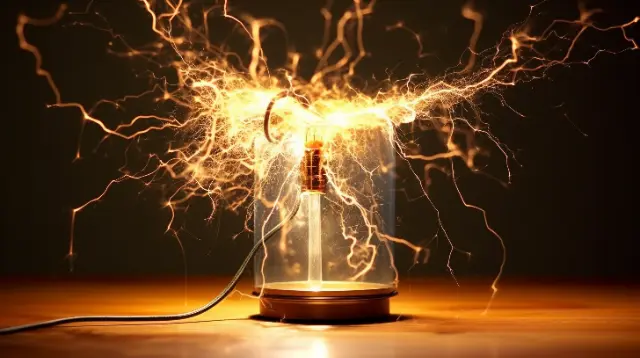Electric Field Intensity Vs. Electric Field Density - Differences?

In this article, I will talk about the basic concepts of Electric Field, its intensity, density and the differences between these two.
A lot of new electrical engineering students get confused about the differences in electric field intensity and electric field density. Let’s demystify these terms first.
The electric field is a region around a charged particle where an electric force is experienced by other charged particles. But within this definition lies a world of depth.
Let's start with Electric Field Intensity.
In a nutshell, electric field intensity (E) is a measure of the force experienced by a unit positive charge placed in the field. It’s a vector quantity that points in the direction a positive test charge would experience a force.
The intensity of an electric field can be affected by factors such as the charge creating the field (q) and the distance from the charge (r).
The formula for electric field intensity is given by Coulomb’s law:
E = k * q / r^2where:
E is the electric field intensity,
k is Coulomb's constant (approximately 8.99 * 10^9 N m^2/C^2),
q is the charge producing the field, and
r is the distance from the center of the charge.
Notice that the intensity of the electric field decreases as the square of the distance from the charge, indicating that the influence of a charge is stronger closer to it and decreases rapidly as we move away.
Now, onto Electric Field Density, also known as Electric Flux Density.
Electric Field Density (often represented by the symbol D) is another way of looking at the electric field, specifically through the lens of how much electric field is passing through a given area.
This vector quantity relates to the number of electric field lines passing through a unit area perpendicular to the field. Its SI unit is the Coulomb per square meter (C/m^2).
The formula to compute Electric Field Density is as follows:
D = ε * Ewhere:
D is the electric field density,
ε is the permittivity of the material or medium (which can be seen as a measure of how much the medium can resist the formation of an electric field within it),
E is the electric field intensity.
By examining this equation, it becomes clear that the electric field density is directly proportional to the electric field intensity, and that the proportionality constant is the permittivity of the medium.
Finally, let's address the practical applications of both these phenomena.
Electric Field Intensity finds its application in numerous areas of physics and engineering. For instance, it's used in designing and analyzing electric circuits, capacitors, and inductors.
Furthermore, it has applications in electromagnetic wave propagation, in technologies like radio and television signal transmission.
Meanwhile, Electric Field Density has a significant role in various areas of engineering and physics as well. It's used to determine the charge distribution over a surface, like in capacitors.
Moreover, it also plays a vital role in Gauss's law for electric fields, one of the four Maxwell's equations that form the foundation of electromagnetic theory.
To summarize, both electric field intensity and electric field density provide different but complementary perspectives on the electric field.
They are tools that scientists and engineers use to decode and leverage the invisible forces that govern our universe.
I hope you understood the concept well. Through our knowledge of electric field intensity and electric field density, we can continue to push the boundaries of what is possible in electrical and electronic engineering, making new technologies, systems, and applications that can change the world for the better.
Let me know if you have follow-up question. I’ll be more than happy to answer.
Replies
-
 Jeffrey ArulrajElectric field Density is the amont of electric field passing through a unit volume of material
Jeffrey ArulrajElectric field Density is the amont of electric field passing through a unit volume of material
Intensity is linear version Amount of field experienced in the same dimension alone I am not sure about this much -
 mifo
mifo
Electricity Field Intensity considers the properties of medium(permittivity of medium)(denoted by E)Abhishek RawalAs title mentions, I would like to know the difference between Electric Field Density & Electric Field Intensity.
Illuminate me please.
while
Electric Field Density is independent of permittivity of the medium(denoted by D) -
 Void RunnerIntensity is generally the summation (or integration) of the absolute magnitudes per component of a system without considering the area.
Void RunnerIntensity is generally the summation (or integration) of the absolute magnitudes per component of a system without considering the area.
Density generally considers area or volume and may or may not be a measure of absolute magnitude.
You are reading an archived discussion.
